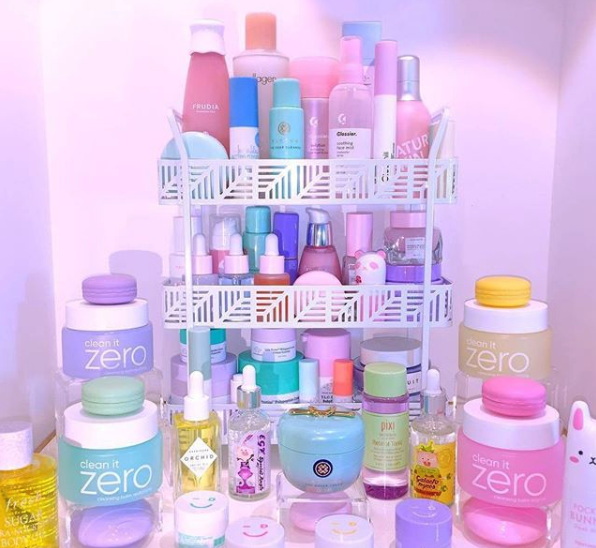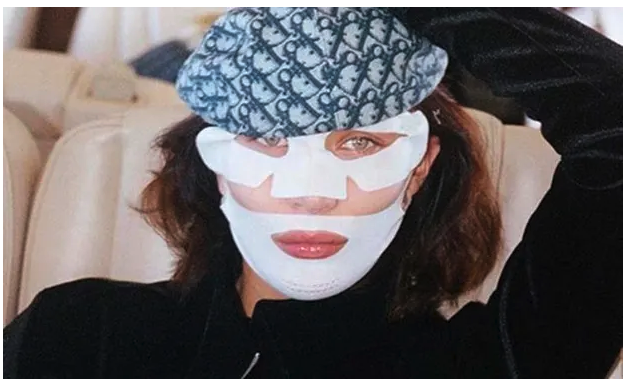In less than a decade, what was once considered a quirky, cutesy fad has morphed into THE definitive way the world approaches skincare. From three steps to multi, from stripping to hydrating, from covering up to preventing, the way we do skincare has drastically changed thanks to the Korean approach to beauty. A K-beauty pioneer — one of the first to lead the charge in the West — examines the growing K-beauty influence on Western beauty.
The other night, I was needlessly scrolling through Twitter when I saw an ad from Ponds, the U.S. brand famous for the cold cream you’ve most definitely seen your mom or grandma use. But instead of an ad for their cold cream, it was for their newest product — a cleansing balm. I gasped in disbelief. A major drugstore brand coming out with a cleansing balm is a huge deal and also shows just how much K-beauty influence there is on Western skincare.
The newest staple to your skincare routine. Introducing Pond’s Cold Cream Cleansing Balm - here to give you clean, soft skin without breaking the bank. pic.twitter.com/O8ITHG9WuQ
— POND'S® (@PONDS) October 10, 2018
(Compare the Pond's photo with the OG cult cleansing balm by Banila Co:)
View this post on Instagram
I fell in love with K-beauty almost seven years ago, and even to this day, my skincare routine is about 90% Korean beauty. When I moved back to the U.S., K-beauty was making huge headways here, but it was still seen as this cutesy, fringe, “other” type of skincare. You could see the hesitation — companies started selling Korean beauty brands, but the selections were small and often hidden out of plain site. I remember I went to a very popular U.S. beauty store to try to find a cleansing balm or oil and asked one of the sales associates where I could find the K-beauty section (as it wasn’t with the rest of the skincare), and she literally had no idea what I was talking about. I then just asked her where I could find an oil or balm for double cleansing … and she showed me options that were just regular oils and a stack of makeup wipes. There were no cleansing oils or balms. Double cleansing wasn’t a popular thing back then; it was one of those weird things the K-beauty enthusiasts did. And now Ponds is making a cleansing balm, a product that is decidedly K-beauty influenced. How far we have come!

It’s pretty clear now that the popularity of K-beauty has changed the landscape of skincare. Sheet masks, once a product that was relatively unheard of outside of Asia, were proclaimed 2018’s biggest beauty trend by The Guardian and are now one of the symbols of wellness and self-care in the U.S. (sheet mask + wine + Netflix, anyone?). Double cleansing is now a staple in a skincare routine, with people like Congresswoman Alexandria Ocasio-Cortez touting it as a must-do step. Hydrating toners are mainstream. Serums aren’t just for rich, old people anymore. Babyfoot and foot peels have even crossed over and are available in drugstores. We’ve gone from three basic steps to people showing off their multi-step routines on Instagram.

Major global beauty companies like LVMH and Estée Lauder are also getting a part of the pie by investing in and buying K-beauty brands. Bobbi Brown has tapped K-beauty influencer Pony to help front one of its new beauty campaigns. And get this — L’Oréal has acquired major Korean beauty and fashion brand StyleNanda (which owns 3CE). At this point, we can’t deny just how much K-beauty has influenced Western beauty.
I consider myself one of the first pioneers of K-beauty in the U.S., and it makes me ridiculously happy to see just how mainstream it’s become. Let’s just state facts here. Before Asian beauty came on the scene and made people lose their minds (and empty their wallets, me included), Western skincare products were boring. Boring with a capital B.
And not only that, skincare definitely was not the core focus of Western beauty routines — it was alllllll about makeup. The focus wasn’t on how to treat and balance oily skin, but how to use mattifying makeup. It wasn’t about how to treat acne, but what concealer was best to cover it. Take it from me. I’ve been a beauty addict my entire life, and before I discovered K-beauty, I didn’t even regularly moisturize my face. Skincare was an afterthought.
Just a few years ago, it was almost impossible to find makeup YouTubers focusing on prepping the skin before applying makeup (something that was typically done over on the Asian beauty side of YouTube), and now, the tables have turned. There’s been a seismic shift in the Western beauty world. Skincare is at the forefront of beauty routines. Instead of covering imperfections with makeup, people are focused on achieving better skin, so their makeup applies better. And that’s all thanks to K-beauty.

K-beauty has pushed U.S. brands to be more innovative, more imaginative, and more creative with their products and their formulations. For so long, skincare in the U.S. has been the very basics: cleansers, moisturizers, toners, and wash-off masks. Now major U.S. brands are touting cleansing sticks and balms, hair and face sheet masks, hydrating serums, and overnight sleeping masks, all available at price points affordable for everyone — which is key here. K-beauty is exciting because it’s innovative and affordable — something that Western brands have been unable to achieve until recently. The game has definitely changed, and I look forward to seeing how K-beauty continues to grow and shift the entire beauty world around us.
When was the first time you noticed the K-beauty influence on Western beauty? Let me know in the comments!
Loading...